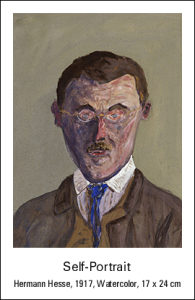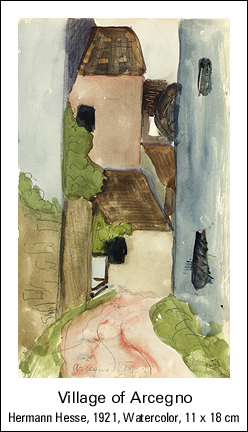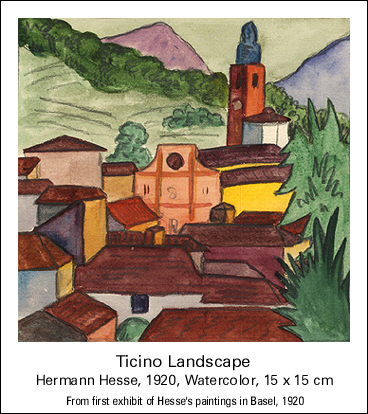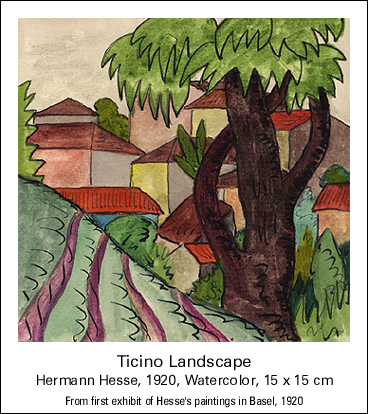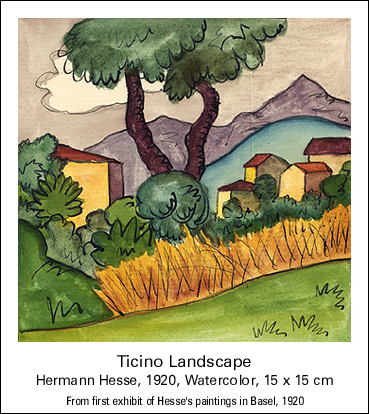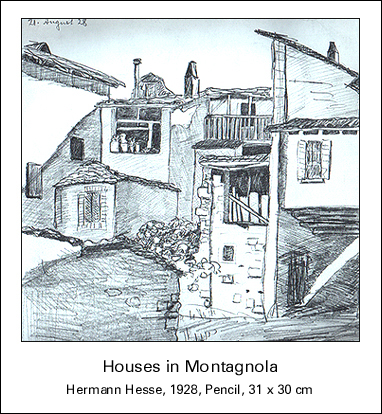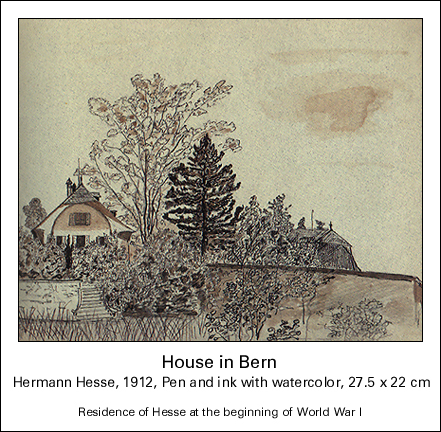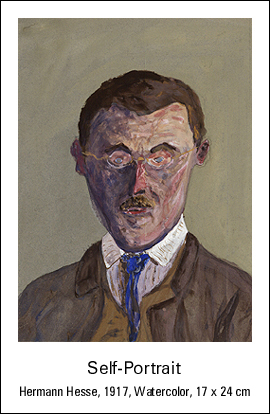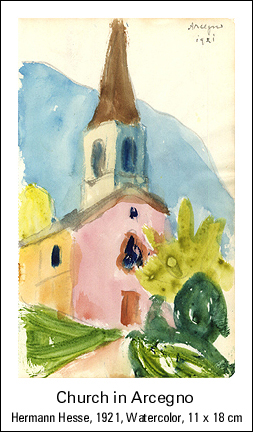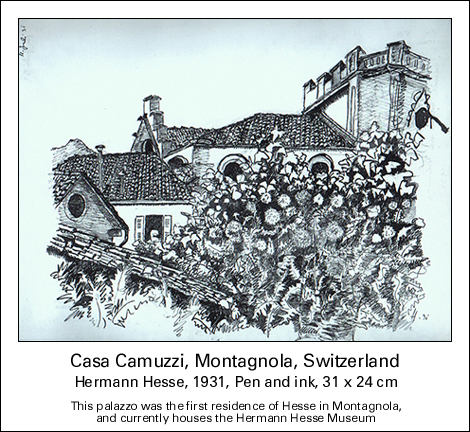Hermann Hesse: Novelist, Poet, Painter
February 14 – May 30, 1999
This historic exhibition brought to a U.S. museum for the first time original watercolors by novelist Hermann Hesse, as well as pen-and-ink drawings. The exhibition also included Hesse’s brushes, pencils, palette and paint box, a color facsimile of his 1946 Nobel Prize award in Literature, first edition books of Hesse’s works, reproductions of letters by Hesse with translations (including correspondence with Carl Jung), photographs of Hesse writing and painting with Thomas Mann, and other personal artifacts.
Hermann Hesse turned to painting in his early 40’s at a time of emotional stress. Settling in the village of Montagnola in the Italian-speaking canton of Ticino in southern Switzerland, Hesse was captivated by the landscape. His watercolors reveal an Expressionist fervor, a Fauvist palette, and a style that often touched base with Cubism.
Hermann Hesse Hesse was born July 2, 1877 in the small southern German town of Calw, into a very colorful and culturally sophisticated family. Hesse claimed, “From my thirteenth birthday on, it was clear that I wanted to be a poet or nothing at all.” In 1895 Hesse left Calw and took a position as an apprentice bookseller, bringing him in contact with the writings of Nietzsche and Goethe. In 1899, at age 22, Hesse moved to Basel, Switzerland. His first edition of poems,Romantic Songs was published that year. In 1904 Hesse’s first novel, Peter Camenzind was published.
During World War I, Hesse was accused of being a traitor by the German press because of his pacifist views. His writings were rejected in Germany, and his royalties ceased, yet Hesse continued working for peace and published anti-war documents under the pseudonym Emil Sinclair. By 1917 the war, family problems and inner conflicts had taken a toll on Hesse. His physician sent him to a sanatorium where he met psychologist Dr. Joseph Lang, a pupil of Carl Jung, who introduced Hesse to the gnostic wisdom of ancient religions and advised him to paint. Hesse wrote his novel,Demian in 1917. The novel reveals the impact of his time in the sanatorium. In 1919 Hesse moved to the small village of Montagnola, Switzerland.
“When I, after forty-one years of searching for a refuge, came to Montagnola for the first time and rented a small apartment with a balcony under which bloomed next to a few Magnolias also a gigantic Judastree, I was a man in his ‘best years’ and of a mind to start again, although four years of war had left me defeated and bankrupt,” Hesse wrote of Montagnola in Merian magazine in 1960.
Hesse’s collection of three novellas, Klingsor’s Last Summer, was published shortly after his move to Montagnola. According to Hesse experts, it is in this work that the author may be seen as “a poet who wrote with the eyes of a painter.” By 1920 Hesse had completed numerous paintings, and exhibitions of his paintings were held that year in Basel and Lugano, Switzerland.
In 1922 his novel, Siddhartha was published, followed by Steppenwolf in 1927. Hesse continued to write and paint through World War II, though his writings were again rejected in his native Germany. During the war Hesse opened his home to intellectual emigrants who had to flee Nazi Germany. In 1942 Hesse completed The Glass Bead Game, a work intended to explore a struggle of the spirit against the power of barbarism and to reconcile spirit and nature. In 1946 he received the Nobel Prize in literature as well as the Goethe Prize.
On August 9, 1962, Hermann Hesse had a stroke and died in his home in Montagnola.
At the time of his death, Hesse, in addition to his novels and collections of poems, had written 3,000 literary reviews and 35,000 personal letters. He had painted about 3,500 watercolors, mostly of the places where he had lived and which were particularly dear to him. Of his paintings, Hesse wrote, “I have shown my appreciation to the old houses and stone roofs, the garden wall, the chestnut trees, the near and faraway mountains, by painting, using hundreds of good sheets of drawing paper, many tubes of water paints, and drawing pencils.”
Oglethorpe University Museum made arrangements with Jean Olaniszyn, founder of the Hermann Hesse Museum in Montagnola, Switzerland, to bring this exhibition to an American museum for the first time. The exhibition was sponsored by Swissair, The Goethe Institut-Atlanta, The Swiss Center Foundation, and Marianne and Claus Halle.
Selected Highlights:


